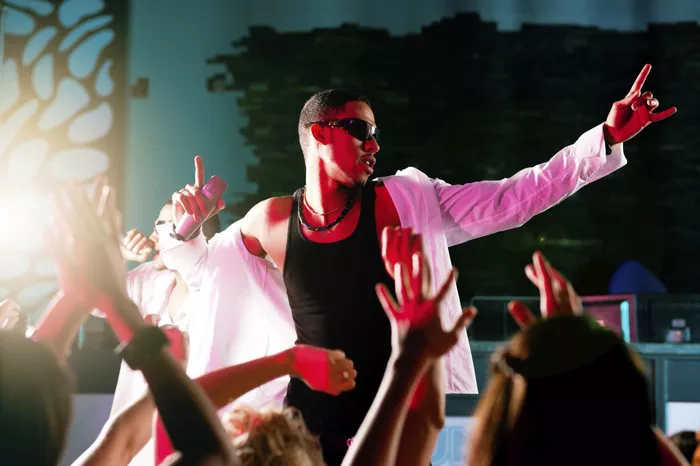Hip hop and rap music have become global phenomena, influencing cultures and societies worldwide. Originating in the African American and Latino communities of the Bronx, New York City, during the 1970s, hip hop has evolved into a diverse and powerful cultural force that transcends boundaries. This article explores the history, elements, impact, and evolution of hip hop and rap music, shedding light on their significance in contemporary society.
1. The Roots of Hip Hop
The roots of hip hop can be traced back to block parties in the South Bronx, where DJ Kool Herc used two turntables to extend the instrumental break of songs. Emcees soon began rhyming over these breaks, laying the foundation for rap music. As the culture grew, graffiti, breakdancing, and fashion became essential elements of the hip hop movement.
2. The Four Pillars of Hip Hop
Hip hop culture rests on four pillars that define its essence:
a) MCing (Rapping)
Rapping is the vocal delivery of rhymes over a beat or instrumental. MCs use rhythm, flow, and wordplay to convey their thoughts, experiences, and emotions, often tackling social and political issues in their lyrics.
b) DJing
The DJ is the backbone of hip hop, providing the beats and music for MCs to rhyme over. They mix and scratch records, creating unique sounds that energize the crowd during performances.
c) Graffiti
Graffiti art is another fundamental element of hip hop culture. It began as a form of expression on the streets, with artists using walls as their canvas to create intricate and vibrant visual representations of their thoughts and identities.
d) Breakdancing
Breakdancing, or b-boying/b-girling, is a dynamic dance form that emerged within hip hop culture. Dancers execute intricate moves, spins, and freezes, showcasing their creativity and athleticism.
3. The Impact of Hip Hop and Rap Music
Hip hop has had a profound impact on various aspects of society, leaving a lasting impression on music, fashion, language, and activism.
a) Music and Pop Culture
Hip hop music has become a dominant force in the music industry, with artists like Jay-Z, Kendrick Lamar, and Cardi B achieving global recognition. The genre has also influenced other music styles, leading to the emergence of sub-genres like trap and mumble rap.
b) Fashion and Style
Hip hop fashion is characterized by oversized clothing, sneakers, baseball caps, and flashy jewelry. Brands and designers have embraced this urban style, turning it into a multi-billion dollar industry.
c) Language and Slang
The language of hip hop has permeated popular culture, introducing new slang words and phrases that have found their way into everyday conversations and even dictionaries.
d) Social and Political Activism
Hip hop has been a powerful platform for social and political activism, providing a voice for marginalized communities and shedding light on issues such as racism, poverty, and police brutality.
4. The Evolution of Rap Music
Rap music has undergone significant transformations since its inception, adapting to changing musical trends and societal developments.
a) Old School Rap
The early days of rap, known as old school rap, featured simple beats and straightforward rhymes. Artists like Grandmaster Flash and Run-D.M.C. laid the groundwork for future generations.
b) Golden Age of Hip Hop
The late 1980s to the early 1990s is considered the golden age of hip hop. Artists like Tupac Shakur and The Notorious B.I.G. emerged during this period, bringing socially conscious lyrics and intricate storytelling to the forefront.
c) Gangsta Rap
The 1990s also saw the rise of gangsta rap, with artists like N.W.A. and Ice-T portraying gritty and often violent tales of street life, drawing both praise and criticism.
d) Mainstream Success and Commercialization
As hip hop gained popularity, it also faced commercialization and criticism for promoting materialism and misogyny. Nevertheless, the genre continued to evolve, exploring new sounds and fusing with other musical styles.
e) Contemporary Era
In the 2000s and beyond, rap music continued to dominate the charts. Artists like Drake, Kanye West, and Nicki Minaj achieved massive success while pushing the boundaries of the genre.
5. Criticisms and Controversies
Despite its global popularity, hip hop has not been without controversies. Some critics argue that certain lyrics promote violence, misogyny, and materialism, perpetuating negative stereotypes.
6. The Future of Hip Hop and Rap
As hip hop and rap continue to evolve, their future remains promising. Emerging artists are using the genre to address pressing issues like mental health, climate change, and social inequality, showcasing the genre’s potential for positive impact.
Conclusion
Hip hop and rap music have come a long way since their humble beginnings in the Bronx. They have grown into influential cultural movements that transcend borders, connecting people from diverse backgrounds through their music, dance, art, and language. While facing criticisms and controversies, hip hop remains a powerful platform for expression and activism, and its evolution promises even greater strides in the future. As we move forward, let us celebrate and embrace the rich and transformative legacy of hip hop and rap music.

